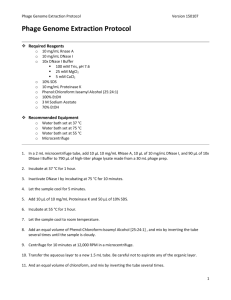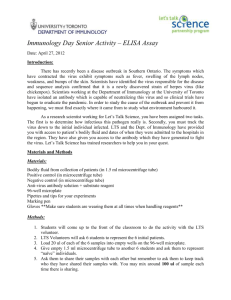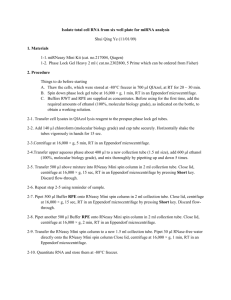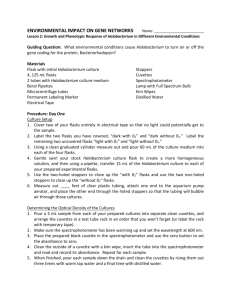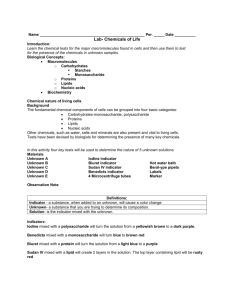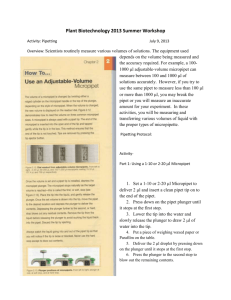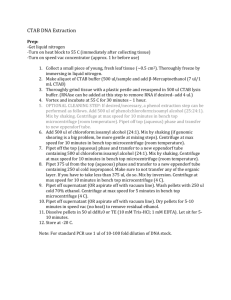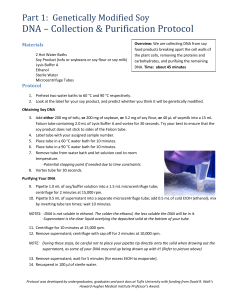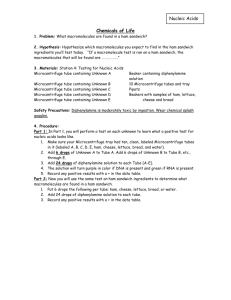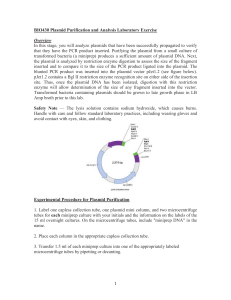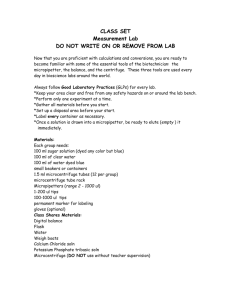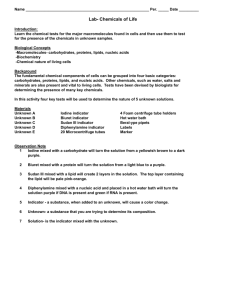Arabidopsis - tissue sampling
advertisement
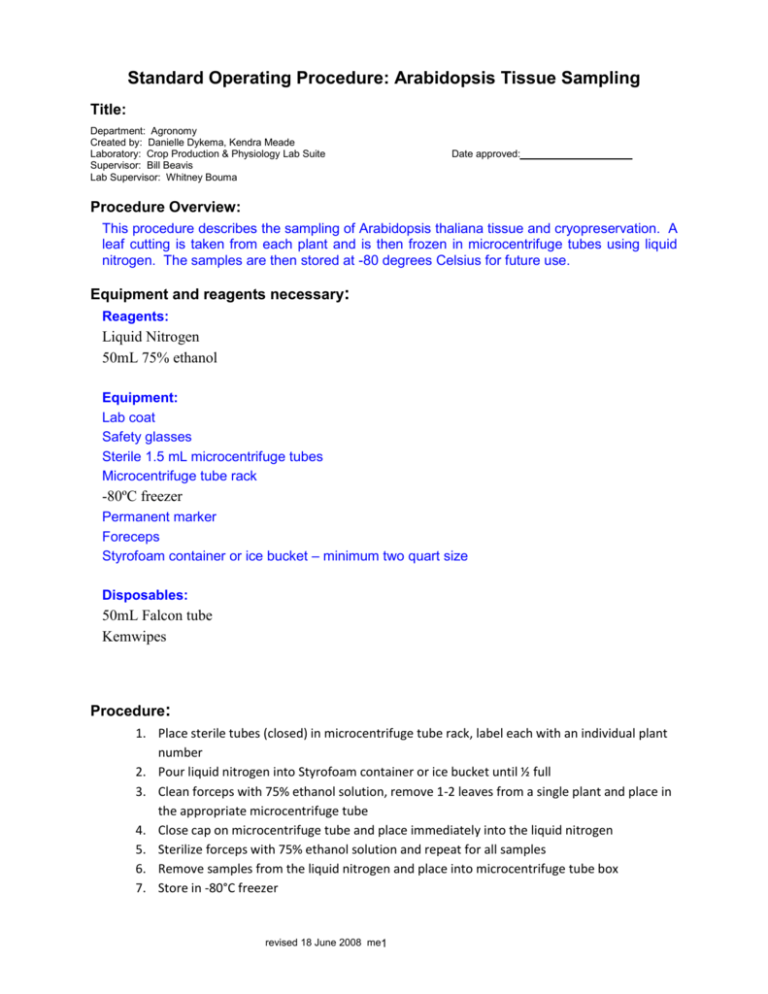
Standard Operating Procedure: Arabidopsis Tissue Sampling Title: Department: Agronomy Created by: Danielle Dykema, Kendra Meade Laboratory: Crop Production & Physiology Lab Suite Supervisor: Bill Beavis Lab Supervisor: Whitney Bouma Date approved: Procedure Overview: This procedure describes the sampling of Arabidopsis thaliana tissue and cryopreservation. A leaf cutting is taken from each plant and is then frozen in microcentrifuge tubes using liquid nitrogen. The samples are then stored at -80 degrees Celsius for future use. Equipment and reagents necessary: Reagents: Liquid Nitrogen 50mL 75% ethanol Equipment: Lab coat Safety glasses Sterile 1.5 mL microcentrifuge tubes Microcentrifuge tube rack -80ºC freezer Permanent marker Foreceps Styrofoam container or ice bucket – minimum two quart size Disposables: 50mL Falcon tube Kemwipes Procedure: 1. Place sterile tubes (closed) in microcentrifuge tube rack, label each with an individual plant number 2. Pour liquid nitrogen into Styrofoam container or ice bucket until ½ full 3. Clean forceps with 75% ethanol solution, remove 1-2 leaves from a single plant and place in the appropriate microcentrifuge tube 4. Close cap on microcentrifuge tube and place immediately into the liquid nitrogen 5. Sterilize forceps with 75% ethanol solution and repeat for all samples 6. Remove samples from the liquid nitrogen and place into microcentrifuge tube box 7. Store in -80°C freezer revised 18 June 2008 me1 8. Allow liquid nitrogen to evaporate under fume hood while person running procedure is in the lab Personal Protective Equipment / Engineering Controls: Lab coat, eye protection and hand protection must be selected as required by Section D of the EH&S Laboratory Safety Manual. Check the box(es) next to the item(s) which are appropriate for your procedure. Nitrile gloves Safety glasses Face shield Dust mask Latex gloves Splash goggles Lab coat Fume hood Neoprene gloves Vented goggles Apron Biosafety cabinet Insulated gloves Eye wash station Safety shower Respirator Note: Open-toed and heeled shoes are NOT allowed. Other Control Measures: Handling & Storage Precautions: High pressure gas. Do not puncture or incinerate container. Use equipment rated for cylinder pressure. Close valve after each use and when empty. Protect cylinders from physical damage; do not drag, roll, slide, or drop. Use a suitable hand truck for cylinder movement. Never allow any unprotected part of the body to touch uninsulated pipes or vessels that contain cryogenic liquids. Prevent entrapment of liquid in closed systems or piping without pressure relief devices. Some materials may become brittle at low temperatures and will easily fracture. Waste Disposal Procedures: Dispose of in a manner consistent with federal, state, and local regulations. Spill/Release Containment and Clean Up/Decontamination Procedures: Immediately contact emergency personnel. Stop leak if without risk Health & Safety Summary for Required Reagents: Brief description of associated hazards C a r c i n o g e n Chemical name Liquid Nitrogen Ethanol T e r a t o g e n M u t a g e n R e p r o d u c t i v e E f f e c t s S e n s i t i z e r I r r i t a n t T o x i c H i g h l y T o x i c C o r r o s i v e C o m p r e s s e d G a s E x p l o s i v e F l a m m a b l e Target Organ(s) . x x x C o m b u s t i b l e x Eyes, Skin, Reproductive System, Central nervous system (CNS), Liver, Kidney, Blood revised 18 June 2008 me2 O r g a n i c P e r o x i d e s O x i d i z e r P y r o p h o r i c U n s t a b l e W a t e r H e a l t h R e a c t i v e F l a m m a b i l i t y R e a c t i v i t y Incompatibilities x x Strong oxidizing agents, Strong acids, Acid anhydrides, Acid chlorides 2 3 0 The above summary consists of guidelines for proper handling & disposal of chemicals used in this procedure. You must read and understand the contents of the entire MSDS(s) before starting this procedure. References: List references used in preparing this procedure. revised 18 June 2008 me3
